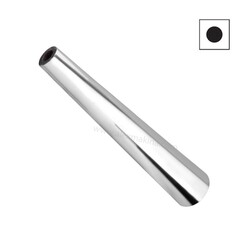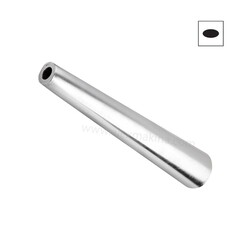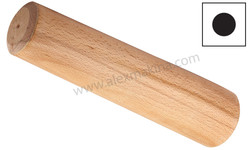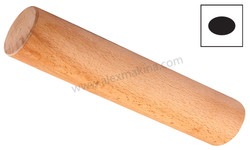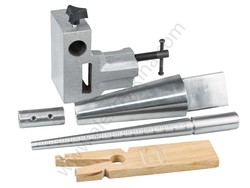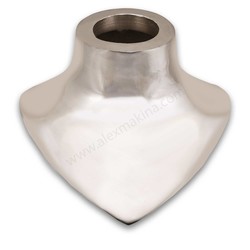Bracelet Mandrel
Thanks to bracelet mandrels, shaping and stretching bracelets have become child’s play. The majority of wire bracelets are manufactured by hand, followed by the final shaping which is completed with the help of a bracelet mandrel in conjunction with a rawhide hammer.
What is a bracelet mandrel?
Regardless of whether you have years of experience as a jewelry designer under your belt or if you’re a rookie jeweler just starting his career, a bracelet mandrel is a must have due to its ability to form bracelets with the perfect shape. Sometimes, a bracelet mandrel is equipped with a tang or sometimes a metal tab, to ensure that the braceletmandrel is secured in a vise when you’re busy hammering!
Some forms of bracelet mandrel are extremely accurate for sizing as it saves you the trouble of flipping your work and potentially damaging the design in the process. A bracelet mandrel of that type is called stepped mandrels. This ensures that the metal and the opening of the wrist will remain perpendicular to one another. If you opt for an extremely wide cuff or a gauntlet, a tapered oval bracelet mandrel is recommended as it makes operation more comfortable for the user since your arm is tapered from wrist to elbow.
What are the available types of jewelry mandrels?
Due to the diverse needs of a modern jeweller, you can find a range of customized jewelry mandrel. The right jewelry mandrel can help you easily accomplish specialized tasks.
Bracelet mandrel types
Bracelet mandrels are an integral part of designing the perfect bracelet. They provide the designer with an amazing surface to shape metal into curves when designing bracelets. Watch out though, these mandrels have loads of steel and are extremely heavy, unless your mandrel is made of wood.
Round mandrels are extremely useful in designing items such as bangles. Despite this, some designers prefer oval-shaped mandrels to design cuffs as our wrists are shaped as such. But, worry not, you can use a round mandrel to get similar results - all it takes is some extra hammering to get your desired shape.
Wood bracelet mandrel
Looking for the ideal mandrel to design the perfect bangle? Wood oval bracelet mandrels are exactly what you’re looking for. These also prove to be effective when you are working with thinner metals. As there is a potential risk of the wood delaminating, ensure you safeguard the mandrel by wrapping it with wax or parchment. In addition, keep heavy metals away from your wooden mandrels as they could cause severe damages and dents.
Steel bracelet mandrel
Steel bracelet mandrels are the best mandrels you can purchase. They are often considered to be a one-time investment due to their extreme durability and long life. The majority of rings are forged with the use of a mallet. This makes a steel mandrel the ideal choice as it will not crack, dent, splinter and will prove to be an effective tool for a jeweler.
Oval ring mandrel
Most rings are shaped and formed on oval ring mandrels. But ring mandrels are not always limited to only ring shaping and can be an ideal surface for a wide array of shapings. Although several shapes are available, the selection isn’t as great as bezel mandrels, mostly because people show little to no interest in oval or triangular shaped ring shanks.
Round bracelet mandrel
A round bracelet mandrel will assist in creating round bracelets for use.
How to use bracelet mandrel
Using a bracelet mandrel is as simple as it gets. Place your bracelet on the mandrel and form the shape of the bracelet with the use of a rawhide mallet. Make sure to remove the bracelet regularly and turn it around to ensure the shaping is as even as possible.
How to determine bracelet size
Making certain that you get the correct measurements in your designs is an integral part of jewelry designing. Select a place where you’d usually wear your bracelets and measure the size around your wrists at that point. With the help of a ribbon measuring tape, bracelet gauge, or a ruler and paper alone, precisely measure around your wrist.
For anyone who is confused about how to get the measurement with a strip of paper, just mark where the bracelet’s end on the strip of paper and there you get your measurement with a ruler. Regardless of the method you opt for, you need to get the exact measurement for the wrist size.
Use the following chart as a rough guide on what size is ideal.
- Add 1/4 to 1/2 inch for a snug fit.
- Add 3/4 to 1 inch for a comfortable fit.
- Add about 1-1/4 inch for a loose fit.
